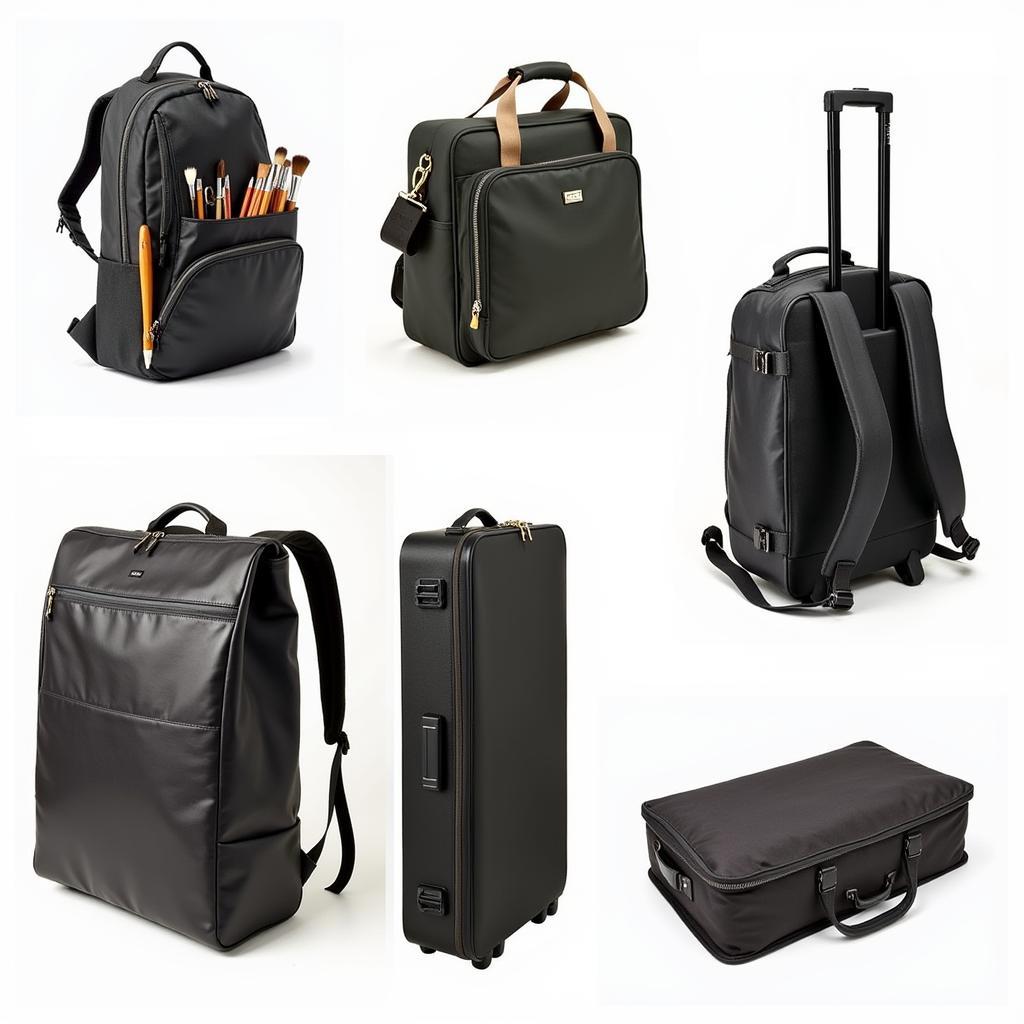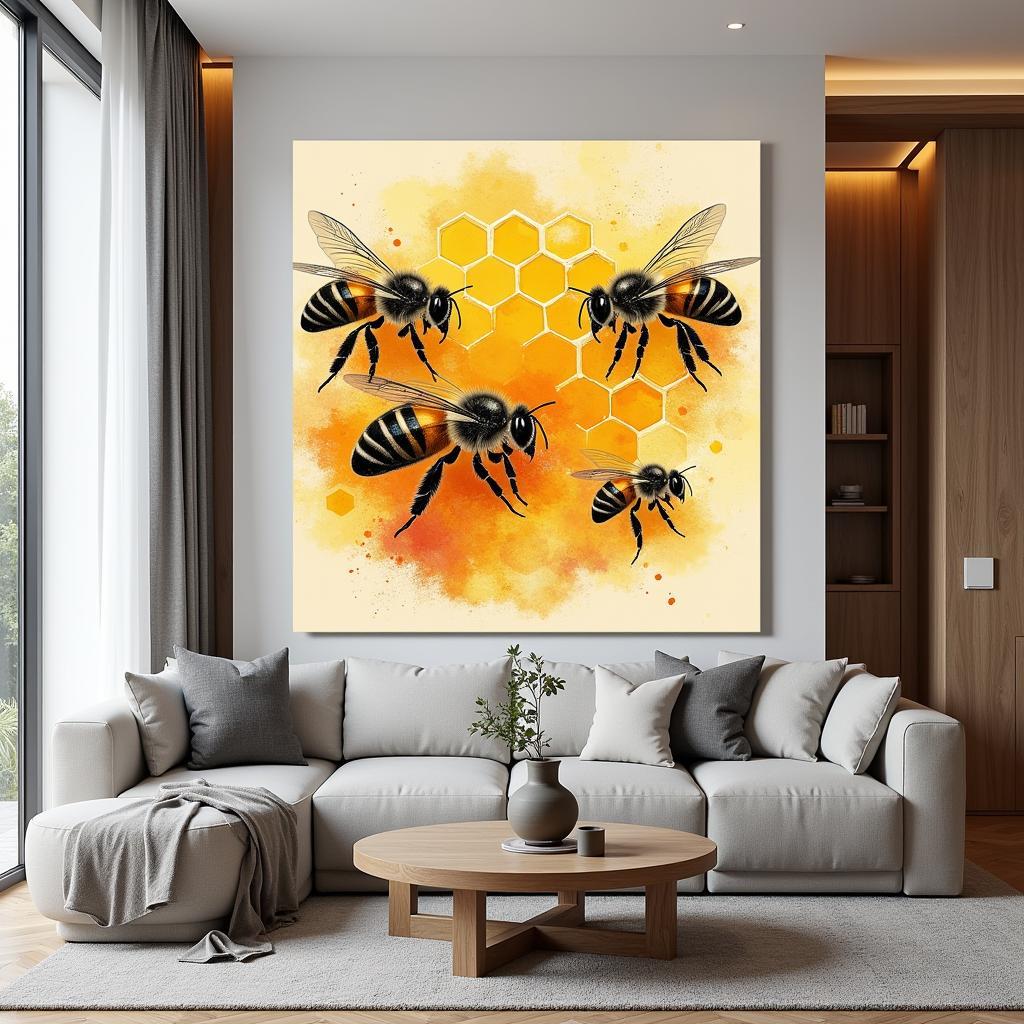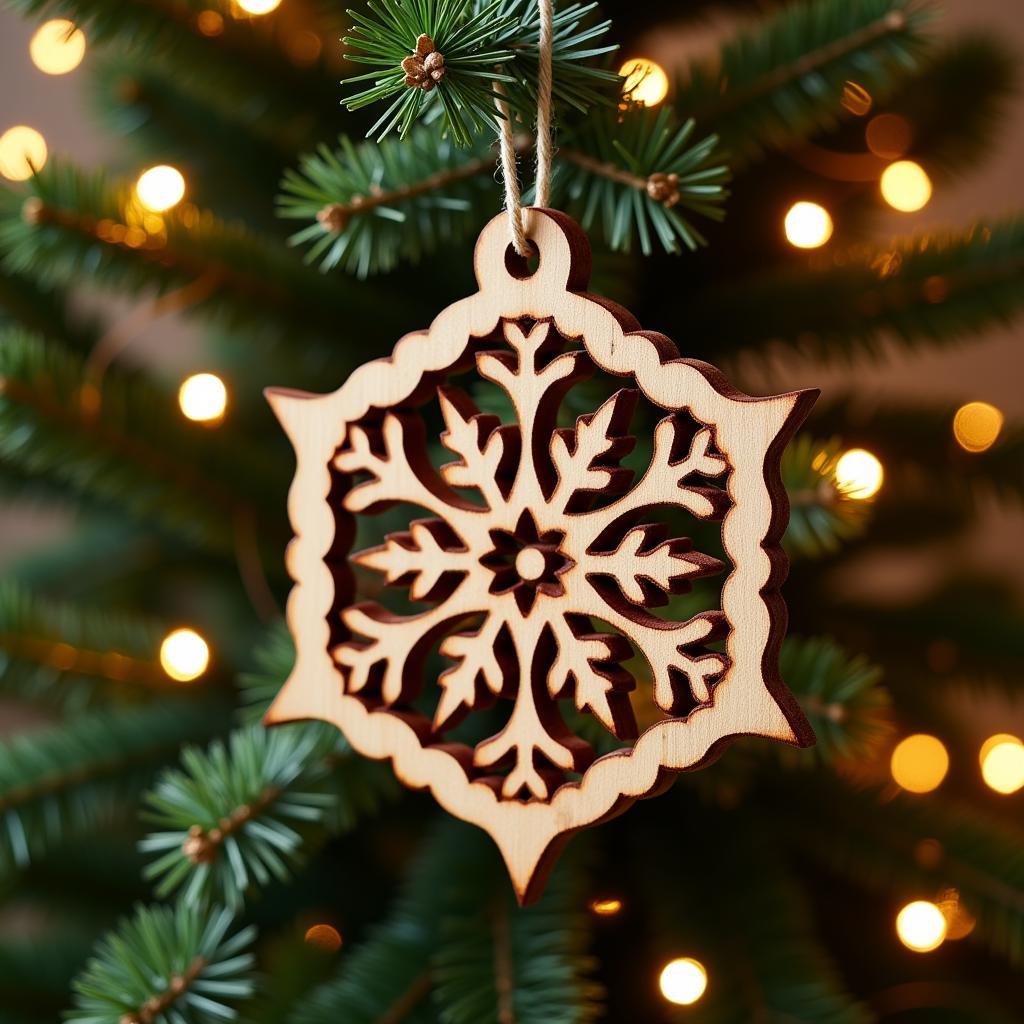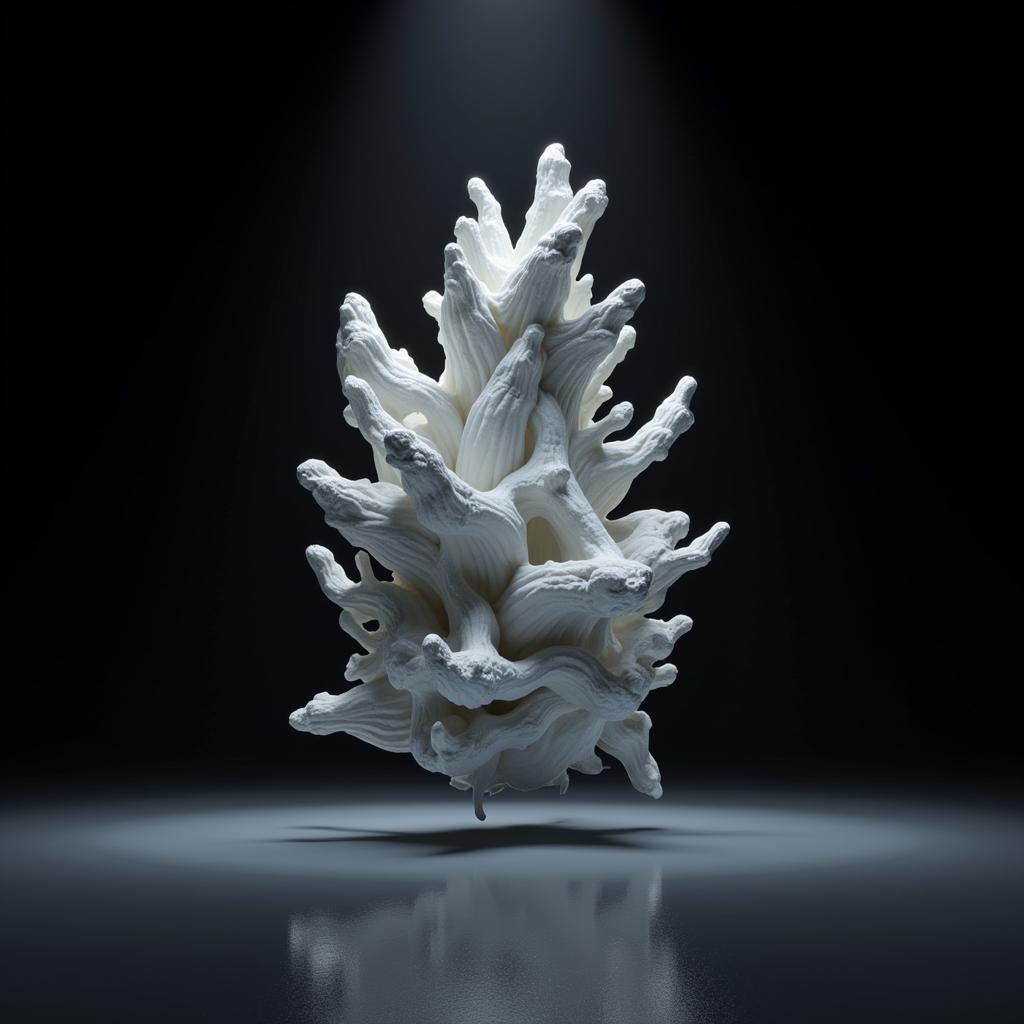Creating the Perfect Montessori Art Shelf: A Guide for Budding Artists
A Montessori Art Shelf is more than just a place to store crayons and paper; it’s a thoughtfully curated space designed to foster creativity, independence, and a lifelong love of art in young children. By incorporating Montessori principles, you can transform a simple shelf into a vibrant invitation for exploration and self-expression.
Setting the Stage for Artistic Exploration: Key Considerations
When creating a Montessori art shelf, accessibility is key. The shelf should be at your child’s level, allowing them to independently choose materials and tidy up afterwards. Opt for natural materials like wood or wicker baskets to store supplies, and display a limited but engaging selection of art materials to avoid overwhelming your little artist.
Essential Materials for Your Montessori Art Shelf
To ignite your child’s creative spark, stock your art shelf with a variety of open-ended materials that encourage experimentation and exploration. Here are some must-haves:
- Drawing tools: Crayons, colored pencils, markers, chalk pastels, and oil pastels offer a range of colors and textures for drawing and coloring.
- Painting supplies: Watercolors, tempera paints, and finger paints provide opportunities to explore color mixing and different painting techniques.
- Paper and surfaces: Offer a variety of paper types, such as construction paper, drawing paper, and watercolor paper. Consider adding cardboard boxes, recycled materials, or natural objects like smooth stones for unique painting surfaces.
- Cutting tools: Child-safe scissors are essential for developing fine motor skills and exploring shapes. Include scraps of paper, old magazines, and natural materials like leaves for cutting practice.
- Collage materials: Gather a collection of fabric scraps, yarn, buttons, feathers, and other textured items to inspire imaginative collages.
- Clay and playdough: These malleable materials encourage three-dimensional creativity and strengthen hand muscles.
- Natural materials: Include pinecones, shells, leaves, and twigs to inspire nature-based art projects.
Organizing for Independent Exploration
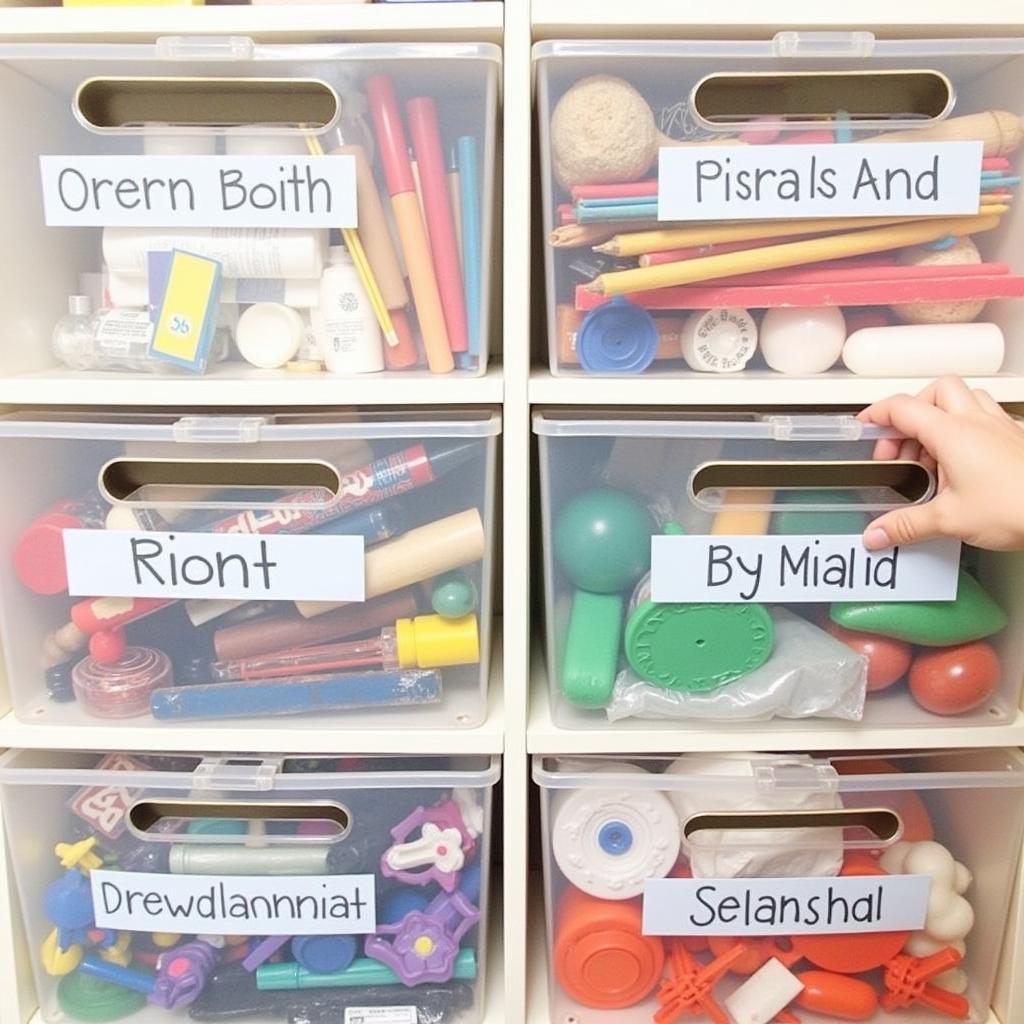 Art supplies neatly arranged in labeled containers on a Montessori art shelf
Art supplies neatly arranged in labeled containers on a Montessori art shelf
Organization is crucial for fostering independence in young artists. Use clear containers or baskets to store materials, and label them with both pictures and words. This allows children to easily identify and access what they need while also supporting their language development.
Rotating Materials to Spark Curiosity
To keep the art shelf engaging and prevent boredom, rotate materials regularly. Introduce new materials alongside familiar ones, and observe your child’s interests to guide your selections. You can also theme your art shelf around seasons, holidays, or current interests to further pique their curiosity.
Fostering Creativity Through Process-Oriented Art
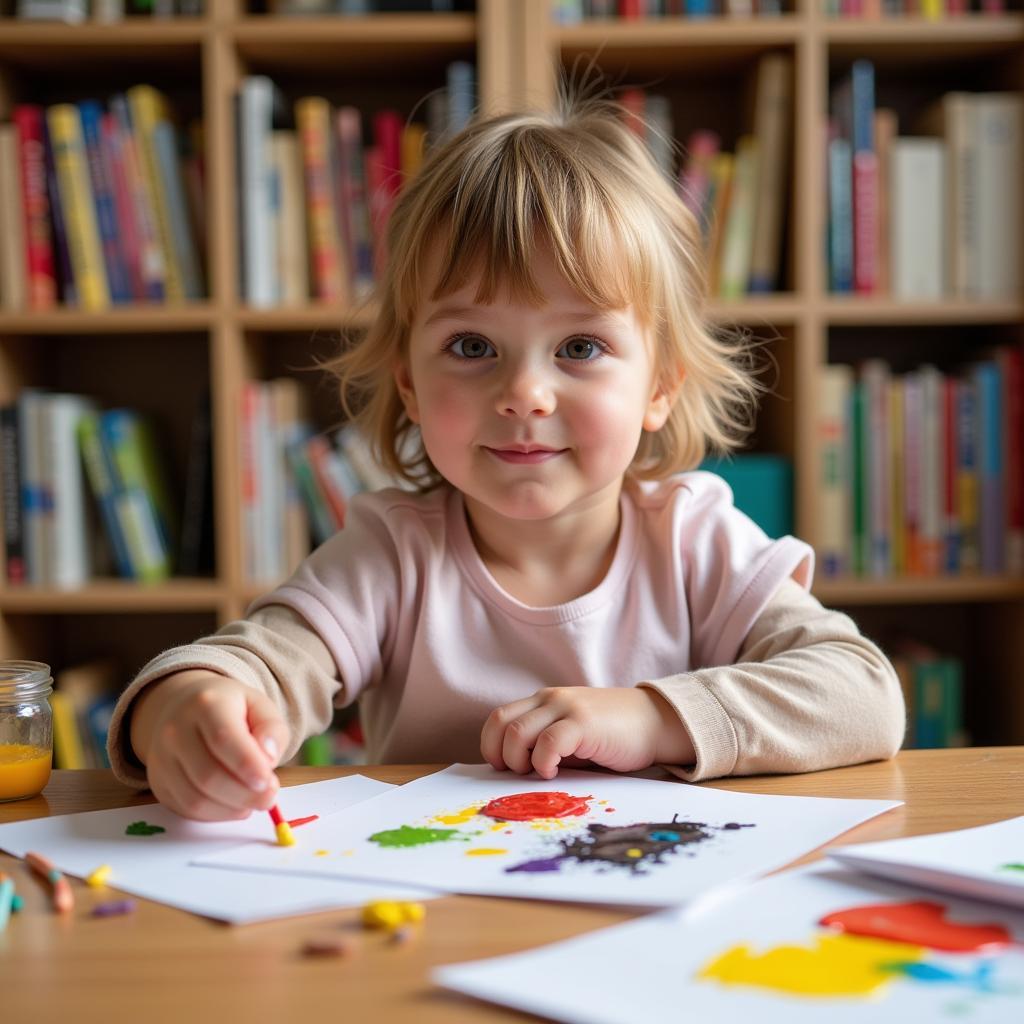 A child engrossed in painting at their Montessori art shelf, emphasizing the joy of process over product.
A child engrossed in painting at their Montessori art shelf, emphasizing the joy of process over product.
In the Montessori approach, the process of creating art is valued over the final product. Encourage your child to experiment freely with materials, explore different techniques, and express themselves without judgment. Avoid offering praise for the finished artwork, and instead, focus on acknowledging their effort, process, and the choices they made while creating.
Integrating Art with Other Montessori Activities
The art shelf seamlessly integrates with other Montessori activities, enriching learning across different areas. Encourage your child to create artwork inspired by their sensorial explorations, language activities, or cultural studies. For example, they could paint their observations after a nature walk, create illustrations for a story they wrote, or design patterns inspired by different cultures.
Conclusion
By embracing the Montessori philosophy and thoughtfully curating an art shelf, you can empower your child to become confident, independent, and passionate artists. Remember to provide a variety of materials, prioritize organization and accessibility, and foster a process-oriented approach to art. By creating a dedicated space for creative exploration, you’ll be nurturing a lifelong love of art and self-expression in your little one.
